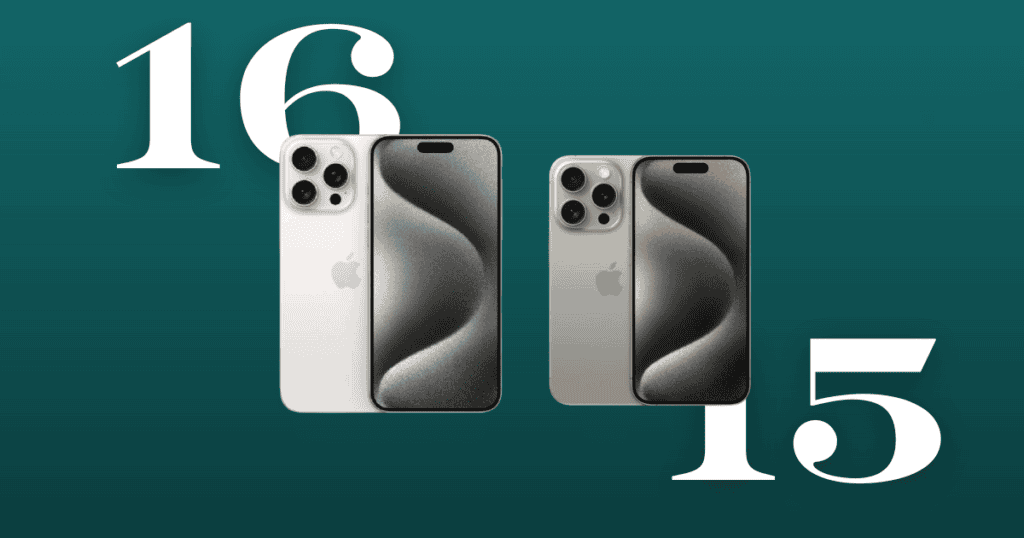The iPhone 16 Pro Max has sparked considerable anticipation, with five key speculated upgrades poised to potentially redefine user experience. Among the most discussed enhancements is the introduction of a Periscope Telephoto Camera, promising superior optical zoom capabilities. Additionally, the Tetr Prism Zoom Lens is expected to greatly improve image clarity. Upgrades to a 48MP primary camera sensor and ultrawide shooter are also anticipated to elevate overall image quality. Finally, a shift to a titanium body construction could enhance both durability and aesthetic appeal. What could these changes mean for the future of smartphone technology?
Periscope Telephoto Camera
Frequently rumored, the iPhone 16 Pro Max‘s anticipated periscope telephoto camera promises to greatly enhance its optical zoom capabilities. This advanced camera technology employs a prism to reflect light perpendicularly, enabling a longer focal length without the need for a larger camera module. Such a design allows for markedly improved optical zoom, potentially reaching levels of 5x or more. This substantial enhancement is expected to offer clearer and more detailed zoomed-in shots, a notable improvement over previous iPhone models.
The inclusion of a periscope telephoto camera in the new iPhone underscores Apple’s commitment to competing with other flagship smartphones that already feature advanced zoom capabilities. By integrating this cutting-edge technology, Apple is allowing users to capture high-quality images even at significant distances, thereby elevating the overall photography experience.
In tandem with other rumored upgrades, such as an improved Face ID system, the periscope telephoto camera aims to position the iPhone 16 Pro Max as a leader in mobile photography. As anticipation builds, it is clear that Apple’s strategic innovations will likely make this new iPhone a compelling choice for tech enthusiasts and professional photographers alike.
Tetr Prism Zoom Lens
The integration of a tetr prism zoom lens in the iPhone 16 Pro Max is expected to greatly enhance its optical zoom capabilities, delivering exceptional image quality even in challenging lighting conditions. This advanced lens design might come as a significant upgrade, potentially revolutionizing the way users capture distant subjects with their smartphones. The tetr prism technology is poised to improve light transmission, thereby elevating image clarity and detail. This improvement could result in superior zoom performance, setting a new benchmark in smartphone photography.
| Feature | Expected Benefit |
|---|---|
| Tetr Prism Design | Enhanced light transmission |
| Improved Optical Zoom | Better capture of distant subjects |
| Low-light Performance | Superior image quality in dim settings |
| Higher Image Clarity | Sharper and clearer photos |
| Videography Enhancement | Elevated video recording capabilities |
The tetr prism zoom lens might come with the promise of transforming the iPhone 16 Pro Max into a powerhouse for both amateur and professional photographers. This technology aims to address the limitations of current zoom lenses, providing a notable boost in both photographic and videographic applications. As speculations continue to build, the inclusion of a tetr prism zoom lens could be one of the most exciting advancements in the iPhone 16 Pro Max, potentially setting it apart in the competitive smartphone market.
48MP Primary Camera Sensor
Building on the advancements brought by the tetr prism zoom lens, the iPhone 16 Pro Max is also expected to feature a substantial upgrade to a 48MP primary camera sensor. This enhancement is anticipated to notably elevate the device’s photographic capabilities, aligning it with the current trends observed in flagship smartphones. The decision to incorporate a 48MP sensor underscores Apple’s commitment to delivering exceptional image quality and advanced camera performance.
The introduction of a 48MP primary camera sensor is poised to offer several benefits:
- Higher Resolution: The increased megapixel count will enable users to capture more detailed and sharper images, making it ideal for professional photography and high-resolution prints.
- Enhanced Low-Light Performance: The larger sensor size facilitates improved light capture, resulting in better image quality under low-light conditions and reduced noise in darker scenes.
- Improved Zoom Capabilities: With higher resolution, the digital zoom performance is expected to improve, providing clearer and more detailed zoomed-in shots.
Apple’s focus on upgrading the primary camera sensor in the iPhone 16 Pro Max signifies an effort to set new benchmarks in mobile photography, ensuring the device remains a formidable contender in the competitive landscape of smartphone cameras.
Ultrawide Shooter Upgrade
Set to enhance the versatility of the iPhone 16 Pro Max, the anticipated upgrade to a 48MP ultrawide shooter promises substantial improvements in image quality and detail. This enhancement is expected to deliver superior low-light performance and an expanded dynamic range, addressing some of the limitations observed in previous models. As a result, users will likely experience more vibrant and detailed ultrawide shots, even in challenging lighting conditions.
The increase in resolution to 48MP could also facilitate the capture of more expansive scenes with enhanced clarity and sharpness. This is particularly beneficial for landscape photography, architectural shots, and group photos, where capturing every detail in a wide frame is essential. Additionally, the higher resolution sensor is projected to offer better cropping and editing capabilities. Users will be able to zoom in and crop their images without significant loss of quality, making post-processing more flexible and effective.
Moreover, this upgrade is poised to solidify the iPhone 16 Pro Max as a premier choice for photography enthusiasts. The enhanced ultrawide shooter, combined with other camera improvements, underscores Apple’s commitment to advancing smartphone photography, ensuring users can achieve professional-grade results with their mobile devices.
Titanium Body Construction
With the iPhone 16 Pro Max, Apple is anticipated to shift from stainless steel to titanium body construction, promising a more durable and lightweight design. This strategic move aims to enhance the device’s overall aesthetics and functionality, aligning with Apple’s commitment to innovation and superior quality materials.
Titanium offers several advantages over stainless steel that could greatly benefit the iPhone 16 Pro Max:
- Enhanced Durability: Titanium is renowned for its high strength-to-weight ratio, making it a more robust option. This strength guarantees that the device can better withstand drops and impacts, thereby offering improved longevity.
- Reduced Weight: Despite its strength, titanium is considerably lighter than stainless steel. This reduction in weight can contribute to a more comfortable and ergonomic user experience, particularly during prolonged use.
- Corrosion and Scratch Resistance: Titanium’s excellent resistance to corrosion and scratches means the iPhone 16 Pro Max could maintain its pristine appearance longer, reducing the need for protective cases and frequent repairs.
These benefits collectively suggest that the shift to titanium could result in a sleeker, more premium device, reflecting Apple’s continuous pursuit of excellence in design and functionality. The iPhone 16 Pro Max is poised to set a new standard in smartphone craftsmanship with this material upgrade.
MacReview verdict
The envisioned enhancements for the iPhone 16 Pro Max juxtapose cutting-edge technology with meticulous design.
The incorporation of a Periscope Telephoto Camera alongside the Tetr Prism Zoom Lens promises unprecedented optical precision.
The shift to a 48MP primary camera sensor and an upgraded ultrawide shooter signifies a leap in photographic capabilities.
Meanwhile, the move to a titanium body underscores a commitment to both durability and aesthetic excellence, reflecting a blend of innovation and craftsmanship.




